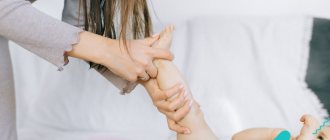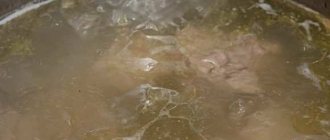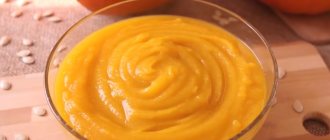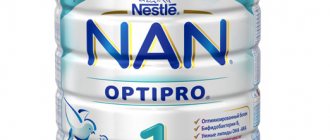It is important!
The benefits of gymnastics are undeniable, but before you start exercising with your baby, you should definitely consult with your pediatrician. During the first weeks after the hospital, he will visit you at home. There are few contraindications against gymnastics for a baby, but they still exist. You should refrain from exercise if the child has skin diseases, problems with the heart and respiratory system, and others. In some cases, a child requires a professional massage, which cannot be replaced by independent gymnastics at home.
Physical activity after one year
Parents make the mistake of stopping physical activity when the child begins to walk on his own. At this time, on the contrary, you should begin more complex exercises for strength, balance and coordination. Children at this age become more active and curious; all this can be directed toward joint performance of gymnastic exercises that are adapted to home conditions. They are aimed at strengthening muscles, developing physical qualities; in addition, they captivate the child and teach him discipline and regular exercise. It is worth noting: to make it easier for your child to master a set of exercises, and for him to become a habit, perform the exercises regularly and gradually complicate the process. From the age of 1 you can start classes at the European Gymnastics Center.
What time to do gymnastics
Gymnastics should be done daily, 3-5 1-2 sessions per day. Perform exercises at least half an hour before meals or 1 hour after feeding.
Conditions for classes
- Ventilate the room where you will study with your baby. The room should be warm, but not hot. The optimal temperature is 20-21 degrees. During the massage, the child also takes air baths - an important hardening factor.
- Conduct classes on a flat, hard surface: on a changing or regular table, or the lid of a chest of drawers. A bed or sofa is not suitable for these purposes, as it will sag under the child and there will be no effect from the exercises. To make your baby comfortable, place a thin blanket on the tabletop and cover it with a diaper.
- The child should be in a good mood, calm and active. If he wants to sleep, is capricious or unwell, classes should be postponed.
- The mother should also tune in to communicate with the baby, not rush anywhere, and not fuss.
- Gymnastics should be combined with air baths. Undress your baby and remove his diaper. Let nothing hinder his movements.
- While doing the exercises, talk to your baby, recite nursery rhymes, and sing songs. You can turn on soft background music.
Exercises for babies up to 2 months
- Place your baby on his back. With both hands, make light stroking movements from the center of the chest to the sides - 3-5 times.
- Stroke the baby's tummy in a clockwise circular motion - without effort, without pressing.
- Let your baby wrap his fist around your finger. Stroke his arms one by one, moving from the hands to the shoulders – 5-6 times. Then gently massage your brushes.
- Stroke your baby's legs 5-6 times from the feet to the hips. Then with your thumb, gently press on the baby’s foot at the base of the toes - the baby will reflexively press them. Maintaining light pressure, move along the foot to the heel. Repeat 5 times for each leg.
- Turn the baby onto his stomach. Stroke his back from head to buttocks with the back of your hand 6-7 times.
- Place your palms on your baby's feet and apply gentle pressure as if pushing them forward. The baby will make reflexive attempts to crawl. The exercise helps strengthen the muscles of the back and abdomen, and trains the legs.
- Turn the child onto his side. Without pressing, move your finger along the spine from top to bottom. The baby will reflexively arch his back and return to his original position. Do the exercise 1-2 times on each side.
Fifth month of life - exercise
Again this Friday with you!











